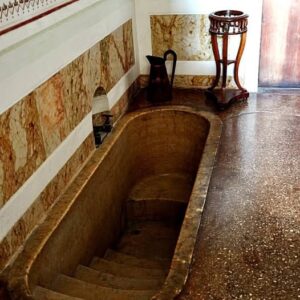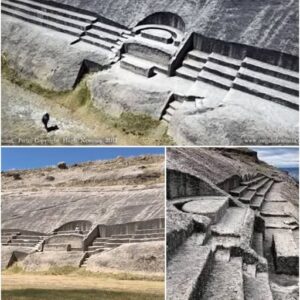Dating back to around 530 BC, the Chariot of Monteleone stands as a breathtaking Etruscan artifact that captures the essence of ancient craftsmanship and artistic mastery. At the core of this exceptional piece is a detailed depiction of the revered Greek hero Achilles, portrayed with astonishing clarity and skill. The front panel of the chariot brings to life a scene brimming with drama, showcasing Achilles’ valor and splendorous armor in all its glory.
What makes the Chariot of Monteleone truly remarkable is its profound reflection of the Etruscans’ deep-rooted fascination with Greek mythology. Through the vivid representation of Achilles on the chariot, we witness not only the Etruscans’ admiration for Greek heroic figures but also their ability to seamlessly blend Greek artistic styles into their own creations. This intricate fusion of cultural influences underscores the sophisticated artistic sensibilities of the Etruscan civilization.

Beyond its aesthetic appeal, the Chariot of Monteleone serves as a living testament to the symbiotic relationship between Etruscan and Greek societies. It serves as a tangible reminder of the cultural interchange that took place between these two ancient civilizations, where ideas, beliefs, and artistic techniques were shared and exchanged. The chariot stands as a physical embodiment of this cross-cultural exchange, encapsulating the essence of a transformative period in history.
In essence, the Chariot of Monteleone is not merely a relic of the past but a window into a world where art, mythology, and cultural identity converged. It symbolizes the creative ingenuity of the Etruscans and their ability to draw inspiration from diverse sources, ultimately creating a masterpiece that transcends time and space. By delving into the intricacies of this magnificent artifact, we peel back the layers of history to reveal a story of innovation, craftsmanship, and the enduring legacy of cultural unity.





